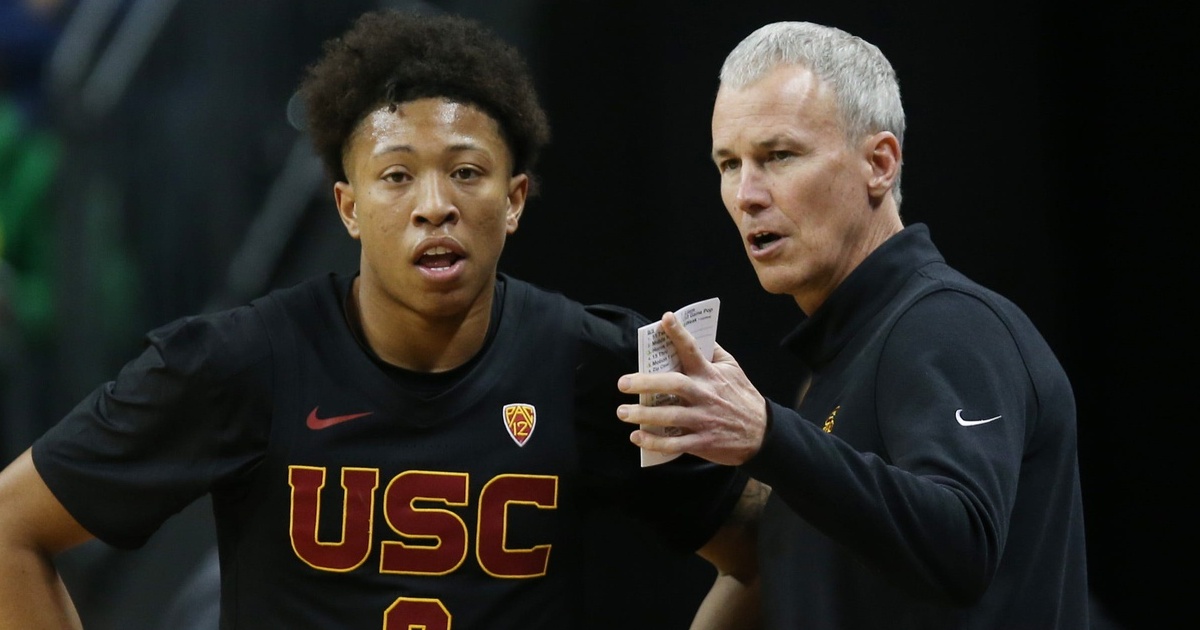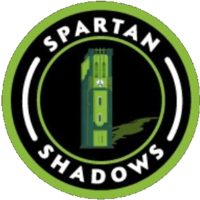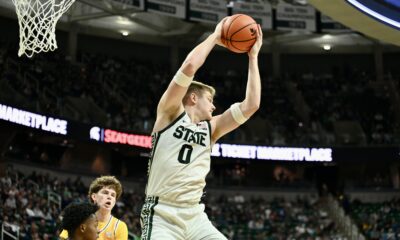Michigan State basketball is matched up with USC in the first round of the 2023 NCAA Tournament. Who are the Trojans?
Michigan State basketball is set to face off against USC in the first round of the 2023 NCAA Tournament on Friday in Columbus.
Unless you live on the West Coast or are a night owl that is obsessed with Pac-12 basketball, it’s very likely that you haven’t seen much of USC this season.
Let’s get to know the Trojans a little better.
Resume
In the final seed list released by the selection committee, USC came in at 39th overall. For context, MSU was 26th. The last at-large team was Arizona State at No. 46. So, while USC wasn’t considered a true bubble team, they were still in the “last four byes” category that bracketologists note in their bubble breakdowns.
Looking at their schedule, there is certainly a case to be made that their position on the seed list is generous. Their best win this season is a victory at home against UCLA on Jan. 26. The 13-point victory likely boosted many of their metrics related to the NET rankings. Aside from that, two wins over Arizona State (the last team in the field) and a home victories over Auburn and Vermont are the only wins the Trojans have against teams in the field.
As for losses, they have an overtime loss to Tennessee and a two-point defeat on the road at UCLA that shows the ceiling of this team. Take this with a grain of salt because it was the first game of the season on Nov. 7, but USC lost by 13 at home to Florida Gulf Coast. That isn’t the worst loss on their ledger though. The loss at Oregon State on Feb. 11 is the type of loss you rarely see from a team in the field of 68. Oregon State ranks outside the top 200 in KenPom and won just five games in a weak Pac-12. USC also lost by double-digits in road games against Washington State, Arizona, and Oregon. So, you get the picture.
USC stacked average to above average wins in a bad Pac-12 and didn’t do anything extraordinary on either end of the spectrum in the non-conference. They avoided really bad losses (for the most part) and pounded the terrible teams in their league.
Statistical profile
USC ranks 50th in the NCAA NET rankings, and 36th overall per KenPom. The Trojans sport a top-50 offense and defense, and rank near the middle of the pack in terms of tempo.
USC’s strength is its defense – specifically their interior defense. The Trojans rank second in the nation in two-point shooting percentage, holding opponents to 42 percent. They also rank 12th in block percentage and No. 9 in overall effective field goal percentage defense. Their roster is filled with long, wing defenders that can guard multiple positions. It has a very NBA-type feel to it in a sense that USC doesn’t play anyone smaller than 6-foot-3. That certainly has the potential to give Michigan State some problems because the Spartans are smaller in the backcourt.
Outside of that interior defense though, there isn’t a ton that jumps off the page with this USC team. Offensively, they are about as average as they come.
Effective field goal percentage, turnover percentage, offensive rebounding, and 3-point shooting percentage all rank outside the top 100 in KenPom. Defensively, they’re not forcing a ton of turnovers, teams have been able to have some success shooting the three against them, and they allow opponents to get to the free throw line a decent amount.
The one glaring weakness with the Trojans is their tendency to give up offensive rebounds. They’re allowing an offensive rebound on 32.6 percent of misses. That ranks 328th nationally. This isn’t a very good offensive rebounding group for MSU, but I’d expect them to crash the boards hard given those numbers combined with the fact that USC isn’t eager to play in transition.
By looking at the numbers, the USC formula for success involves using their length to pressure ball handlers, force shots late in the shot clock, and make it a half court game where they can lean on their defense. The Trojans have seemed more inclined to play at a faster pace against bad teams. They frequently scored in the 80s against the bottom of the Pac-12. But when you look at their games against quality opponents, most of them are played in the high 60s and low 70s. I’d have to guess that’s where they want to make Michigan State basketball play. An up-tempo high possession game has the risk of neutralizing that interior defense and generating a lot of 3-point attempts for Michigan State basketball.
Personnel
Andy Enfield is in his 10th season at USC. Time flies. It feels like just a few years ago he was leading Florida Gulf Coast on that Cinderella run to the Sweet 16.
Assuming USC would have made the NCAA tournament in 2020 before it was cancelled (they were 22-9), he’s been to the Big Dance in five of his 10 seasons. He’s been to the second weekend just once – an Elite Eight trip in 2021 with star freshman and lottery pick Evan Mobley.
This year’s team is led by senior guard Boogie Ellis (elite name) who is in his second year at USC after transferring from Memphis. USC isn’t a deep team – only playing about seven players for significant minutes. So, Ellis has the ball a lot. He leads the team in scoring at 18 points per game. He’s a good shooter at almost 40 percent from three and 81 percent from the free throw line. Get used to him. He’s the straw that stirs the drink and he might play all 40 minutes on Friday.
The other guy to get to know is Drew Peterson who rarely comes off the court. He’s played almost 90 percent of available minutes this season and does a ton for this USC team offensively. He’s a capable shooter at 36 percent from deep while also leading the team in assists and rebounding. The 6-foot-9 senior can be sloppy with the basketball, as he is credited with 88 turnovers this season.
Reese Dixon-Waters, Kobe Johnson, and Tre White are other key contributors to watch for. Dixon-Waters and White are far more effective scoring inside than out, as both are sub 30 percent shooters from downtown. Johnson is a thief defensively, ranking 21st in all of college basketball in steal rate. He’s been credited with 71 steals on the season. All three players average between 9-10 points per game while also doing sufficient work on the glass.
Outside of Peterson, Joshua Morgan is the most effective rebounder for the Trojans. The 6-foot-11 junior will be in the game for his defense, blocking 63 shots on the season.
USC ranks 289th nationally in bench minutes – another reason why I think they will try and slow this game down. Officiating will be key here as well, as USC can’t afford to get into foul trouble with their depth concerns.
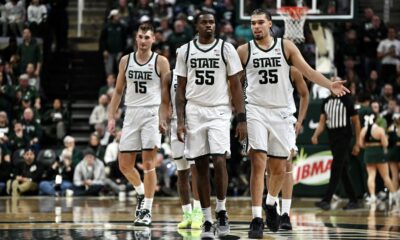
 BASKETBALL2 weeks ago
BASKETBALL2 weeks ago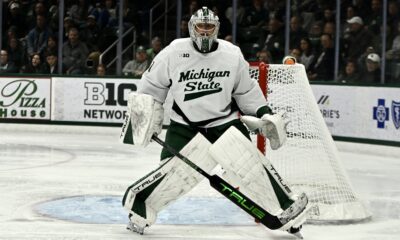
 MORE SPORTS3 days ago
MORE SPORTS3 days ago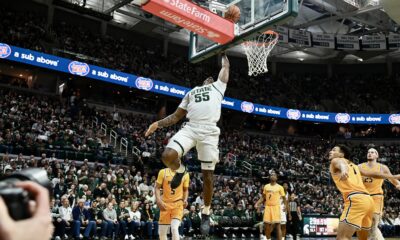
 BASKETBALL2 days ago
BASKETBALL2 days ago
 FOOTBALL2 days ago
FOOTBALL2 days ago
